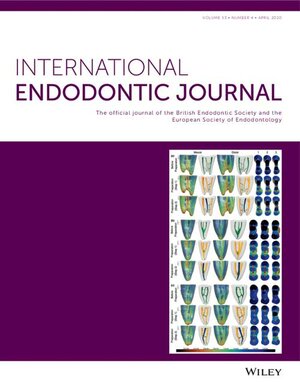Calcium-sensing receptor regulates the angiogenic differentiation of LPS-treated human dental pulp cells via the phosphoinositide 3-kinase/Akt pathway in vitro
Abstract
Aim
The purpose of this study was to investigate the role of calcium-sensing receptor (CaSR) in the angiogenic differentiation of lipopolysaccharide (LPS)-treated human dental pulp cells (hDPCs).
Methodology
The LPS-induced hDPCs were cultured in the medium with different combinations of CaSR agonist R568 and antagonist Calhex231. The cell proliferation, migration, and angiogenic capacity were measured by Cell Counting Kit-8 (CCK-8), scratch wound healing, and tube formation assays, respectively. Enzyme-linked immunosorbent assay (ELISA), quantitative real-time polymerase chain reaction (qRT-PCR), and western blot were conducted to determine the gene/protein expression of CaSR, inflammatory mediators, and angiogenic-associated markers. The activation of phosphoinositide 3-kinase (PI3K) and protein kinase B (Akt) was assessed by western blot analysis.
Results
The cell proliferation was elevated in response to R568 or Calhex231 exposure, but an enhanced cell migration was only found in cultures supplemented with Calhex231. Furthermore, R568 was found to potentiate the formation of vessel-like structure, up-regulated the protein expression of tumour necrosis factor (TNF)-α, vascular endothelial growth factor (VEGF), and stromal cell-derived factor (SDF)-1; comparable influences were also observed in R568-stimulated cells in the presence of PI3K inhibitor LY294002. In contrast, Calhex231 obviously inhibited the tube formation and VEGF protein level, whereas promoted the production of IL-6, TNF-α, and eNOS; however, in the presence of LY294002, Calhex231 showed a significant promotion on the protein expression of CaSR, VEGF, and SDF-1. In addition, R568 exhibited a promotive action on the Akt phosphorylation, which can be reversed by LY294002.
Conclusions
Our results demonstrated that CaSR can regulate the angiogenic differentiation of LPS-treated hDPCs with an involvement of the PI3K/Akt signalling pathway.

 求助内容:
求助内容: 应助结果提醒方式:
应助结果提醒方式:


